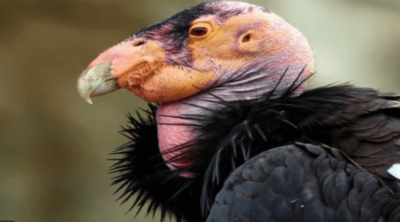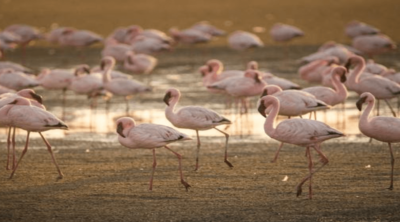
Did you know that the egg of an ostrich is the largest among the living species of birds? Or that the ostrich burying its head in the ground is just a myth? What we have here, is a compilation of some interesting facts and myths about this flightless bird.
The lion slayer!
With its lethal kick, an ostrich can even kill a lion at times. Luckily for the lion, its preferred mode of defense is to flee―not fight.
An ostrich (Struthio camelus) is a large flightless bird native to the African continent. The bird was found in abundance in Africa and Asia minor at one point of time, but large-scale hunting and excessive loss of habitat spelled its doom. In fact, one species of the bird, the Arabian ostrich was driven to extinction. Today, herds of ostriches are predominantly restricted to the Savanna and Sahel regions of Africa.
Ostrich Facts
Contrary to popular belief, the ostrich does not bury its head in the ground when it’s in danger, but instead, hides or runs at the first sign of threat. At times, especially when there is no place to hide, it may just lie down with its head flat on the ground, which makes it appear as if the head is buried in sand. However, if cornered, it can become very aggressive and deliver a fatal blow with its long legs … strong enough to kill a lion, mind you.








Appearance
The tallest as well as heaviest among the living birds, ostriches can grow up to a height of 9 ft and weigh approximately 150 to 300 lb. Their long legs and neck help them keep their head at a decent height, thus helping them keep an eye for predators. When fully stretched, the wingspan of an adult ostrich can spread up to a length of 6 ft. While male ostriches are typically black in color with white wings and tail feathers, females tend to be brownish gray.
Diet
Ostriches are omnivorous in nature, most often feeding on shrubs, grass, and seeds, and sometimes on insects and lizards. They don’t have teeth and hence, depend on gastroliths, i.e., the stones in the stomach, for digestion. Astonishingly, a full-grown ostrich carries around 2 lb of stones in its stomach to aid digestion. Mostly found in areas with water scarcity, these flightless birds have adapted very well to their surroundings, and hence, can carry on without water for extended periods.
Ostriches share their native habitat with herbivores like antelopes and zebras with whom they share a symbiotic relationship. When these herbivores graze, they stir up insects, thus providing ostriches with food. In return, ostriches alert them of approaching danger.
Eggs
Ostriches lay the largest eggs among living birds. Earlier the Elephant bird, native to Madagascar, and the Giant Moa, native to New Zealand, used to boast of the largest eggs, but both have become extinct. A communal nesting place of ostriches may include up to 60 eggs, each measuring approximately 6 inches in length and weighing around 3 lb. The incubation period for these eggs is 40 days. Interestingly, in terms of weight, a single ostrich egg is equivalent to 20 – 24 chicken eggs!
Meat
Ostrich meat is considered a delicacy in many parts of the world. In fact, the bird is farmed for its feathers and meat. Its meat is considered the healthiest red meat available, containing only 96.9 calories and 15 g of fat content in each serving of 3 oz.
Some Fun Facts
- Ostriches are known to be very good runners. They can clock speeds of up to 40 miles per hour, which makes them the fastest species of bird on land.
- When they are running at full speed, their strides measure an impressive 16 ft or 4.9 m. To put that in perspective, our average strides during a brisk walk measure 3 ft.
- With a diameter of 2 inches, they also have the largest eyes of any land animal. In fact, their brain is smaller than their eyeballs, both of which take up most of the room in their head.
- The fact that ostriches are flightless doesn’t mean their wings are of no use. They use their 6 ft wingspan to balance their body when they are running very fast.
- Ostrich eggs are the smallest in relation to the size of the bird―measuring only around 1 to 4 percent of the size of a female ostrich.
- In spite of laying eggs in a communal nest, female ostriches can easily distinguish their own eggs from those of others.
- At birth, ostrich chicks are already feathered and can walk without difficulty. By the time they are 18 months old they attain the size of their parents.
- Though they love water, ostriches can go without it for several days, relying solely on the moisture they derive from their food.
- Female ostriches guard the eggs during the day and the males take on the responsibility at night, using their respective coloration to ensure that they don’t get detected.
- Ostriches have an average lifespan of 40 years in the wild. In captivity, on the other hand, they can easily live for 45 – 50 years.
Today, ostriches are bred for commercial purposes, which range from use of their feathers for decorative purpose to inclusion of ostrich meat in various cuisines, all over the world. In fact, in some places, they are also used as a mode of transport. If you want to know more about these fascinating birds, you should ideally opt for one of the various ostrich tours which are becoming popular by the day.


